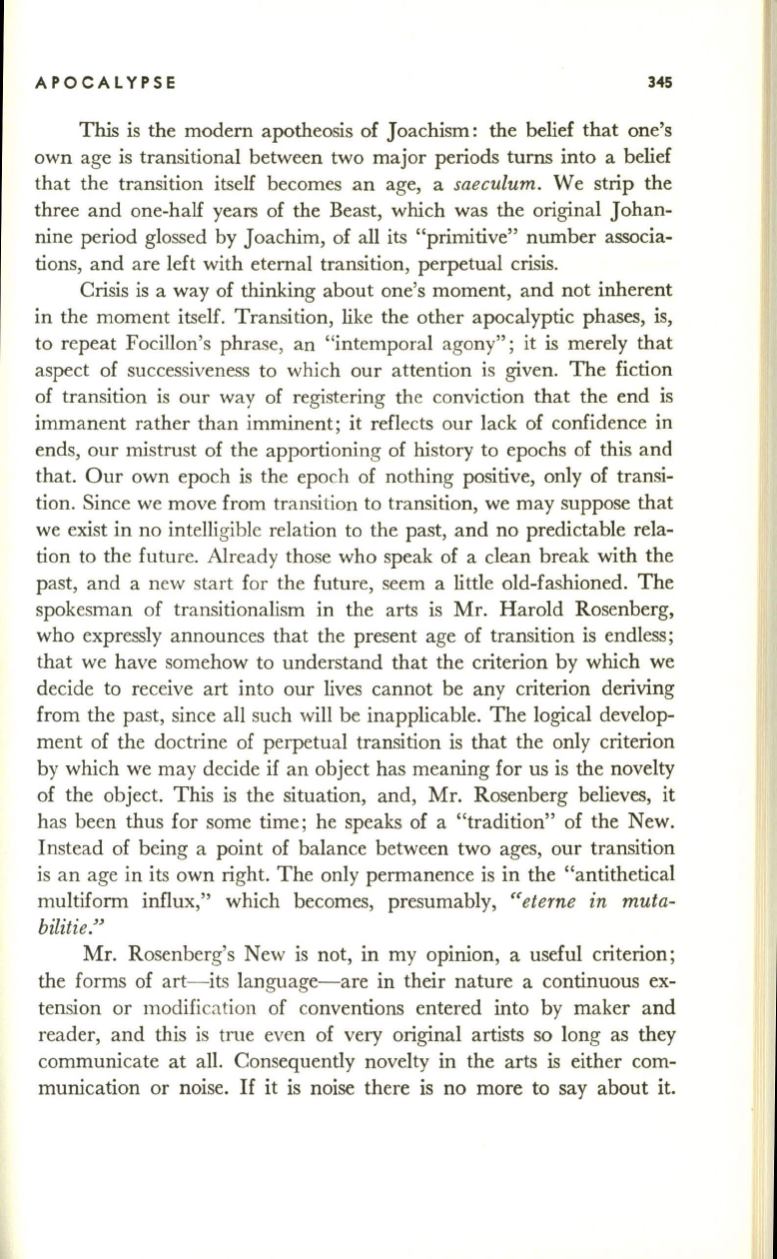
APOCALYPSE
345
This is the modern apotheosis of Joachism: the belief that one's
own age is transitional between two major periods turns into a belief
that the transition itself becomes an age, a
saeculum.
We strip the
three and one-half years of the Beast, which was the original Johan–
nine period glossed by Joachim, of all its "primitive" number associa–
tions, and are left with eternal transition, perpetual crisis.
Crisis is a way of thinking about one's moment, and not inherent
in the moment itself. Transition, like the other apocalyptic phases, is,
to repeat Focillon's phrase, an "intemporal agony"; it is merely that
aspect of successiveness to which our attention is given. The fiction
of transition is our way of registering the conviction that the end is
immanent rather than imminent; it reflects our lack of confidence in
ends, our mistrust of the apportioning of history to epochs of this and
that. Our own epoch is the epoch of nothing positive, only of transi–
tion. Since we move from transition to transition, we may suppose that
we exist in no intelligible relation to the past, and no predictable rela–
tion to the future. Already those who speak of a clean break with the
past, and a new start for the future, seem a little old-fashioned. The
spokesman of transitionalism in the arts is Mr. Harold Rosenberg,
who expressly announces that the present age of transition is endless;
that we have somehow to understand that the criterion by which we
decide to receive art into our lives cannot be any criterion deriving
from the past, since all such will be inapplicable. The logical develop–
ment of the doctrine of perpetual transition is that the only criterion
by which we may decide if an object has meaning for us is the novelty
of the object. This is the situation, and, Mr. Rosenberg believes, it
has been thus for some time; he speaks of a "tradition" of the New.
Instead of being a point of balance between two ages, our transition
is an age in its own right. The only permanence is in the "antithetical
multiform influx," which becomes, presumably,
«eterne in muta–
bilitie."
Mr. Rosenberg's New is not, in my opinion, a useful criterion;
the forms of art- its language-are in their nature a continuous ex–
tension or modification of conventions entered into by maker and
reader, and this is true even of very original artists so long as they
communicate at all. Consequently novelty in the arts is either com–
munication or noise.
If
it is noise there is no more to say about it.


